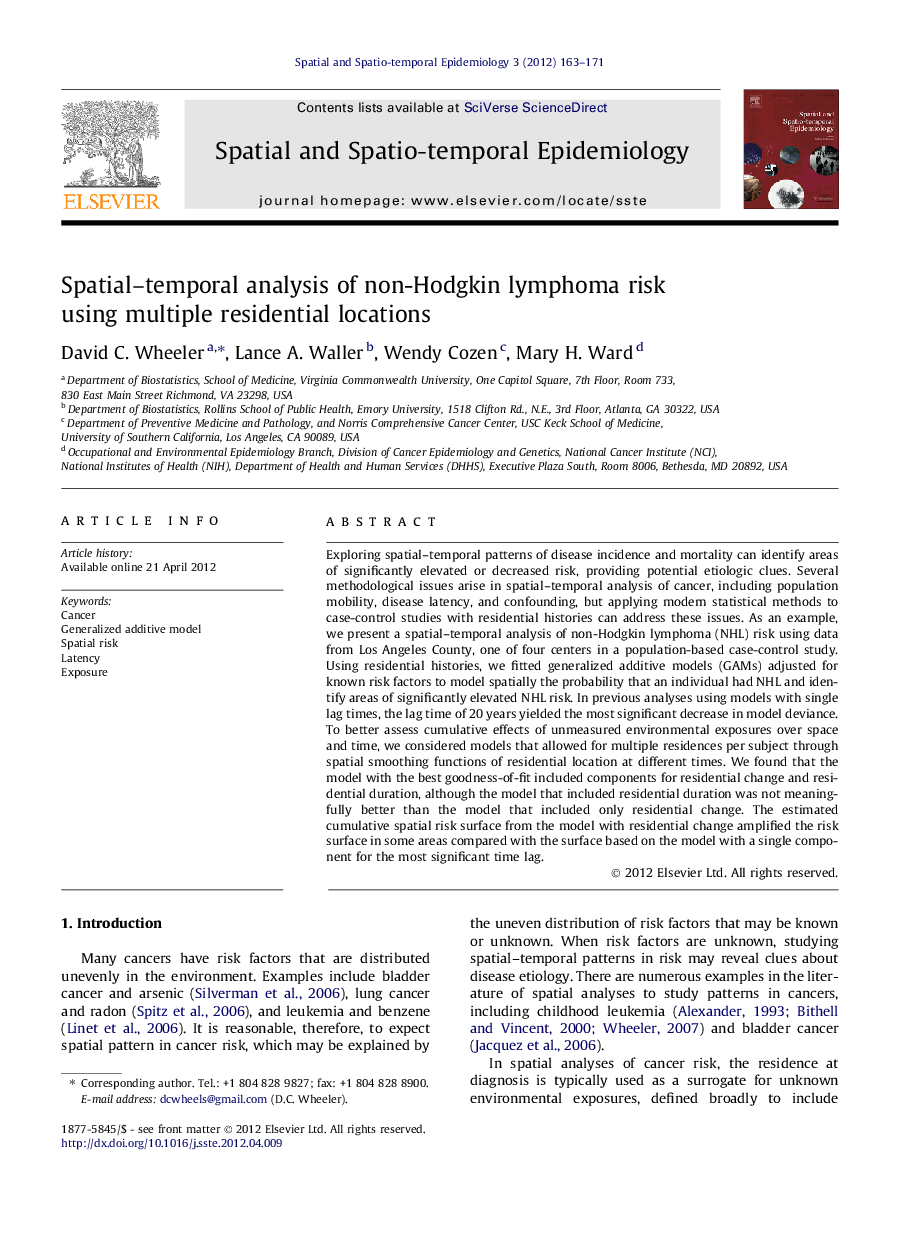| کد مقاله | کد نشریه | سال انتشار | مقاله انگلیسی | نسخه تمام متن |
|---|---|---|---|---|
| 1064439 | 948479 | 2012 | 9 صفحه PDF | دانلود رایگان |
Exploring spatial–temporal patterns of disease incidence and mortality can identify areas of significantly elevated or decreased risk, providing potential etiologic clues. Several methodological issues arise in spatial–temporal analysis of cancer, including population mobility, disease latency, and confounding, but applying modern statistical methods to case-control studies with residential histories can address these issues. As an example, we present a spatial–temporal analysis of non-Hodgkin lymphoma (NHL) risk using data from Los Angeles County, one of four centers in a population-based case-control study. Using residential histories, we fitted generalized additive models (GAMs) adjusted for known risk factors to model spatially the probability that an individual had NHL and identify areas of significantly elevated NHL risk. In previous analyses using models with single lag times, the lag time of 20 years yielded the most significant decrease in model deviance. To better assess cumulative effects of unmeasured environmental exposures over space and time, we considered models that allowed for multiple residences per subject through spatial smoothing functions of residential location at different times. We found that the model with the best goodness-of-fit included components for residential change and residential duration, although the model that included residential duration was not meaningfully better than the model that included only residential change. The estimated cumulative spatial risk surface from the model with residential change amplified the risk surface in some areas compared with the surface based on the model with a single component for the most significant time lag.
Journal: Spatial and Spatio-temporal Epidemiology - Volume 3, Issue 2, June 2012, Pages 163–171
